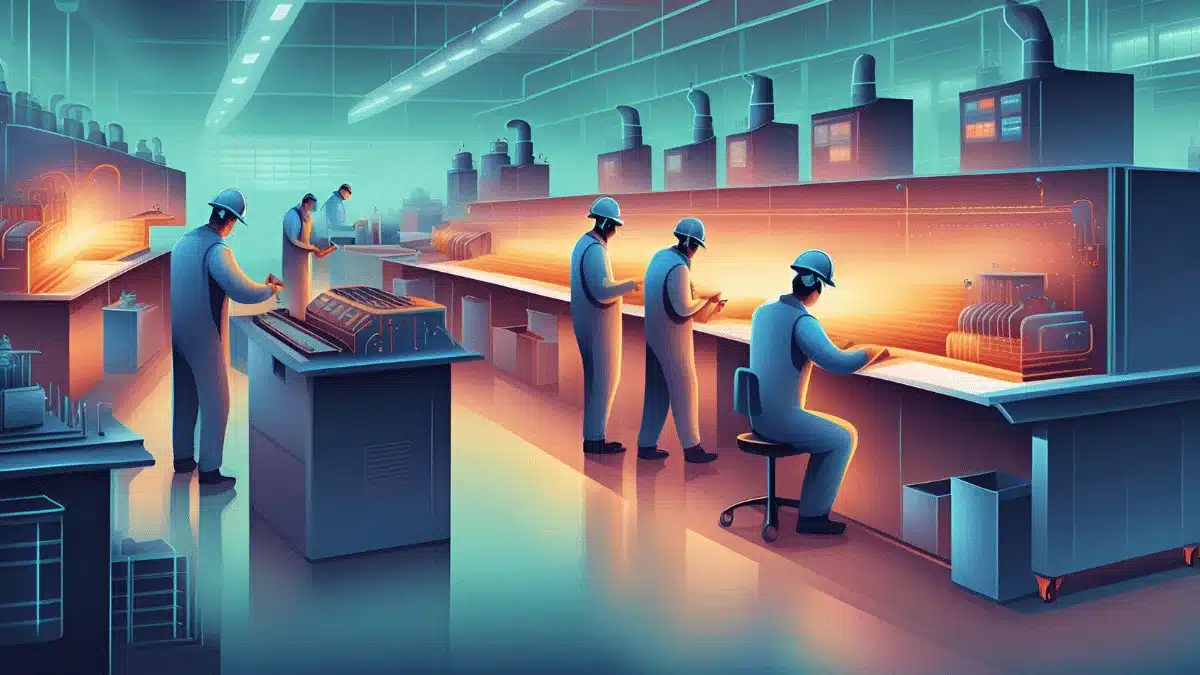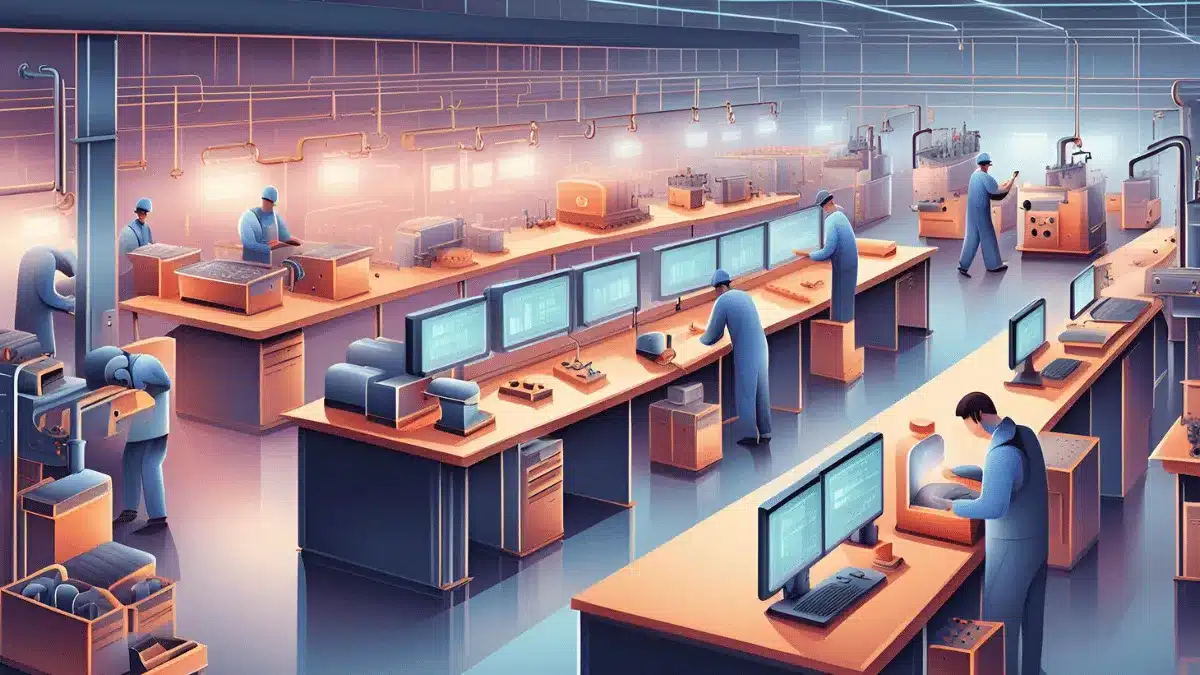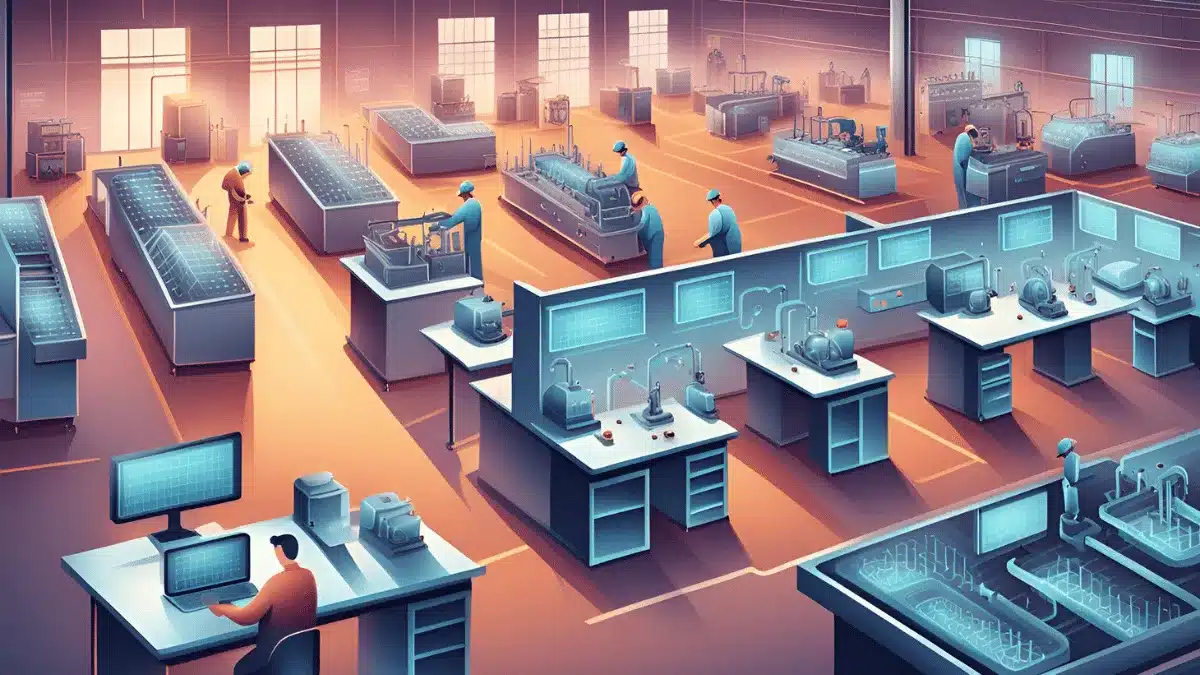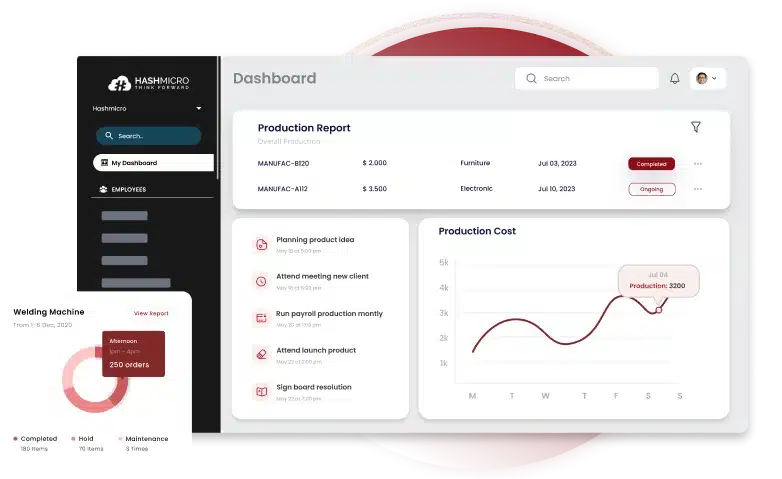Struggling with unreliable supply chains or fluctuating inventory costs? Many manufacturers in the Philippines face constant challenges balancing production with customer demand.
Supply chain disruptions and unpredictable demand swings often lead to either high storage costs from excess inventory or delays that harm customer trust and slow down production. Frustrating, right?
Just-in-Time (JIT) manufacturing offers a way forward. This lean production strategy helps manufacturers produce and deliver materials precisely when needed, leading to minimized waste and cutting down on storage expenses.
This article discusses the just-in-time method, including its benefits, possible risks and challenges, and how to overcome it effectively to reap the most benefits for your production. Sa madaling salita, tara na!
Key Takeaways
|
Table of Contents

What is JIT Manufacturing?
Just-in-Time (JIT) manufacturing is an inventory management approach designed to produce or deliver materials exactly when needed. This strategy keeps inventory lean, reduces waste, and boosts overall production efficiency.
In a JIT system, materials and parts are delivered to the production line precisely when they’re required, cutting down on large stockpiles. The key to JIT’s success lies in accurate demand forecasting, enabling businesses to match production with customer needs.
Strong supplier relationships are essential for JIT manufacturing to be successful. Businesses can ensure on-time delivery, reduce the need for extra storage, and simplify the entire production process by working directly with suppliers.
History of JIT Manufacturing
The JIT (Just-in-Time) method, also called Lean production, became popular among Japanese manufacturers after World War II.
Limited in capital and natural resources, Japanese companies had to adopt efficient, resource-conscious practices within their production systems. This led to smaller factory setups, producing items in limited batches, and focusing intensely on process efficiency.
Toyota led the way in Japan’s use of JIT, implementing these practices so effectively that its approach became known as the Toyota Production System (TPS). TPS identifies seven main sources of waste in manufacturing:
- Overproduction: Producing more items than are currently needed by customers.
- Waiting: Items waiting idly for the next step in production.
- Inventory: Excess stock requiring additional storage and management.
- Transportation: Unnecessary movement of materials or products during production.
- Processing: Inefficient processes consuming extra effort, equipment, or time.
- Motion: Unnecessary worker movements within the production process.
- Defects: Flawed products that waste time, resources, and impact reputation.
Toyota’s significant success in reducing these forms of waste solidified its role in popularizing the JIT model across the manufacturing industry.
Read More: Top Manufacturing Asset Management Software
Benefits of JIT Manufacturing
Just-in-Time (JIT) manufacturing offers a range of benefits for efficient, cost-effective production. By streamlining inventory and aligning closely with demand, JIT optimizes resource use. Here are the key advantages businesses can gain by implementing JIT manufacturing:
- Lower Inventory Costs: By producing only what’s needed, companies reduce storage costs and avoid tying up money in unsold products, minimizing the risk of outdated stock.
- Better Quality Management: JIT helps create a more efficient production flow that responds directly to demand, leading to shorter wait times, faster order processing, and happier customers.
- Reduced Labor Costs: With less need for extra handling and storage, labor costs decrease, allowing teams to focus on essential tasks.
- Greater Efficiency and Less Waste: JIT reduces waste by focusing on efficient, demand-driven production, which leads to smoother operations.
- Ideal for Changing Markets: This approach is especially useful in industries like craft beer, supplements, and food, where customer preferences change quickly and products have shorter shelf lives.
Effective Techniques for JIT Manufacturing Optimization
To make Just-in-Time (JIT) manufacturing effective, businesses can employ several optimization techniques. Below are key techniques that support a smoother, more responsive JIT process:
1. Collaborative Planning (CPFR)
Collaborative Planning, Forecasting, and Replenishment (CPFR) is a method where businesses work closely with their partners (suppliers and retailers) to plan for customer demand and manage inventory.
With CPFR, companies share information and coordinate their efforts to avoid overstocking or running out of products. Hence, it helps businesses and their partners stay on the same page, making the whole supply process smoother.
2. Material Requirements Planning (MRP)
Material Requirements Planning (MRP) helps manufacturers decide when to order materials and schedule production based on customer demand. It uses demand forecasts and lists of needed materials to make sure the right supplies are ready when needed.
3. Kanban System
The Just-in-Time (JIT) and Kanban systems are two strategies that work well together to improve inventory management and production efficiency. JIT inventory management focuses on producing and delivering goods only when needed, cutting down on extra inventory and lowering storage costs.
The Kanban system, on the other hand, uses visual signals (like cards or electronic alerts) to show when materials or components need restocking. This pull-based system ensures that production happens only when necessary, which avoids overproduction and excess inventory.
4. Batch Size Optimization
Batch size optimization helps manufacturers produce in the right amounts, saving money on setup and storage. Smaller, more frequent batches reduce setup time and keep inventory at the right level to match demand.
5. Inventory Segmentation (ABC Analysis)
To manage manufacturing inventory effectively, a structured approach like inventory segmentation with ABC analysis is essential. ABC analysis divides items into three groups:
- Category A: High-value or high-demand items needing close attention and quick replenishment to avoid stockouts.
- Category B: Medium-value or demand items, managed with moderate effort.
- Category C: Low-value or low-demand items that require minimal oversight, helping reduce storage costs.
This method helps prioritize resources socritical items are well-stocked. Furthermore, ABC analysis contributes a lot in controlling costs on less essential inventory. In order to optimize JIT to its full potential, many have started to use manufacturing ERP software, which includes inventory, manufacturing module, sales, and accounting.
How to Make JIT Manufacturing Effective
For a Just-in-Time (JIT) strategy to succeed, several key elements need to be in place. Here’s what a just-in-time production system needs to work effectively:
- Small Batches: JIT relies on suppliers who can deliver smaller quantities more often, which helps manufacturers produce only what’s needed and reduce storage costs.
- Efficient Workflow: Keeping production moving smoothly requires good communication with suppliers and tools like Lean to reduce delays and improve processes.
- Reliable Supplier Partnerships: Trusted suppliers are essential. They need to deliver on time, in smaller batches, and maintain quality. Open communication helps make this work.
- Clear Internal Communication: Within the organization, everyone should know production schedules and changes. This keeps things running smoothly and quickly adjusts to demand.
- Standardized Processes: Consistent steps make it easier to handle materials and quickly solve problems, which reduces mistakes and speeds up production.
- Pull System: JIT uses a “pull” system where items are produced only when there’s demand, keeping inventory low and cutting down on storage needs.
- Backward Scheduling: By planning backward from the customer’s deadline, JIT ensures each production step is ready on time, preventing delays.
- Continuous Improvement: Constantly looking for ways to improve, JIT reduces waste and adapts to market changes, keeping production efficient.
Each of these components works together to support a JIT strategy that’s flexible, efficient, and able to adapt to customer needs.
Risks Businesses Might Face in JIT Manufacturing
Risks in just-in-time manufacturing can impact business continuity and efficiency if not carefully managed. By relying on tight schedules and minimal stock, JIT creates certain vulnerabilities. Here are key risks that manufacturers should be aware of when implementing JIT:
- Supplier Dependence: JIT relies heavily on suppliers for timely deliveries. Any delays or issues on the supplier’s end—such as transport disruptions or resource shortages—can quickly halt production, leading to bottlenecks.
- Quality Control Challenges: JIT often operates under tight deadlines, leaving little room for detailed quality checks. If a quality issue arises, it may go unnoticed until later stages, potentially causing production delays or recalls.
- Limited Flexibility with Demand Spikes: With minimal stock on hand, JIT can struggle to meet unexpected surges in demand. This can lead to missed sales opportunities or delayed customer fulfillment.
- High Dependency on Forecast Accuracy: JIT demands precise demand forecasting. Inaccurate forecasts can result in overproduction or underproduction, which contradicts JIT’s goal of efficiency.
- Increased Transportation Costs: JIT requires more frequent deliveries in smaller quantities. This can lead to higher shipping costs, especially if suppliers are geographically distant.
- Natural Disaster and Market Risks: External events, such as natural disasters, political instability, or market volatility, can disrupt supply chains, putting JIT at risk since it lacks buffer inventory.
While JIT offers benefits like reduced holding costs and leaner operations, it also requires strong supplier relationships, accurate forecasting, and contingency plans to address these potential risks.
Overcoming JIT System Challenges
Effectively managing a JIT system requires careful planning and preparation for potential disruptions. Addressing common challenges can help keep production smooth and inventory lean. Here are key strategies for overcoming JIT system challenges:
1. Strengthen supplier relationships and backup options
Establish strong relationships with multiple reliable suppliers and develop contingency plans to handle delays. Regularly assess suppliers’ risk factors, such as location or capacity, and create backup suppliers to maintain flexibility.
2. Implement continuous quality monitoring
Implement continuous quality monitoring processes, such as automated inspections and regular supplier audits, to catch issues early. Consider using random sample checks to maintain quality without slowing down production.
3. Maintain strategic safety stock for demand surges
Maintain a small, strategic safety stock of high-demand items or critical components. Also, invest in demand forecasting tools that use real-time data, allowing you to adjust to spikes faster and minimize stockouts.
4. Enhance forecast accuracy with advanced tools
Use advanced forecasting software–usually with manufacturing software–that integrates data from sales, market trends, and seasonality to improve accuracy. Regularly update forecasts and use scenario planning to prepare for different demand situations.
5. Optimize transportation costs through strategic partnerships
Negotiate long-term contracts with logistics providers to secure better rates for frequent deliveries. You can also consider nearby suppliers to reduce transport costs and explore cost-sharing opportunities with other local companies.
6. Diversify supply chain to mitigate external risks
Diversify your supply chain by sourcing from multiple regions to minimize the impact of local disruptions. Additionally, invest in risk management strategies, such as insurance for supply chain interruptions, to cover potential losses.
Make Just-in-Time Production Optimal with Manufacturing Software
Manufacturers today know that staying efficient and responsive is key to success. Just-in-Time (JIT) manufacturing optimizes production by only making goods as they’re needed, cutting down on waste and extra inventory.
But for JIT to work well, businesses need precise tools to manage resources, schedules, and quality without disruption. This is where specialized manufacturing inventory software comes in, turning JIT principles into real, day-to-day processes.
HashMicro Manufacturing Software offers a range of practical features tailored for smooth, demand-driven production. With this manufacturing execution system for scheduling, quality control, and inventory planning, HashMicro makes it easy to put JIT into action.
Here’s the list of HashMicro’s features to keep production on track right when needed:
- Manufacturing Production Scheduling: Easily forecast production with our Manufacturing Production Scheduling feature, which draws from past demand patterns and offers clear, intuitive graphs.
- Manufacturing Requisition Planning: Ensure your materials and resources are always ready with Manufacturing Requisition Planning. This feature helps you plan precisely, so you can focus on production without worrying about stockouts or delays.
- Made-to-Order Completion Forecast: With our Made-to-Order Completion Forecast, you’ll predict completion times based on real-time and historical data, giving you confidence in fulfilling customer-specific orders. Maintain lean inventory while meeting demand reliably, and let JIT efficiency guide your production.
- Manufacturing Quality Control: Our Manufacturing Quality Control module integrates seamlessly with production, providing early issue detection to ensure that every item meets high-quality standards.
- Manufacturing Gantt Chart Schedule Management: Keep your production on track with Gantt Chart Schedule Management. Plan, view, and adjust your production timeline visually, making it easy to ensure resources are well-used and timelines are met.
Conclusion
Just-in-Time (JIT) manufacturing streamlines production by delivering materials and producing goods exactly when needed. This lean approach minimizes waste, lowers inventory costs, and enhances production efficiency by aligning output closely with demand.
To fully benefit from JIT manufacturing, precise tools for managing schedules, inventory, and quality are essential. HashMicro Manufacturing Software offers powerful features that support a seamless JIT strategy.
HashMicro’s software also includes intuitive planning and forecasting tools, which help manufacturers confidently meet customer needs. This software provides a reliable foundation for efficient manufacturing, from production scheduling to quality monitoring.
This software will be such a big help in your day-to-day manufacturing processes, walang duda tungkol diyan.
To seize the opportunity to maximize your production process, try the free demo now!
FAQ About JIT Manufacturing
-
How does JIT manufacturing impact supplier relationships?
JIT manufacturing requires close collaboration with suppliers to ensure timely delivery of materials, as delays can disrupt production schedules. This often leads to stronger partnerships and may involve suppliers adopting JIT principles themselves.
-
What role does technology play in JIT manufacturing?
Technology is crucial in JIT systems for real-time tracking of inventory, production schedules, and demand forecasts. Advanced software solutions help manage these aspects efficiently, reducing the risk of overproduction or stockouts.
-
What are the environmental benefits of JIT manufacturing?
By minimizing excess inventory and reducing waste, JIT manufacturing can lower resource consumption and decrease the environmental footprint of production processes. Efficient use of materials and energy contributes to more sustainable operations.
-
Can JIT manufacturing be applied to service industries?
Yes, JIT principles can be adapted to service industries by centralizing processes, reducing wait times, and aligning services closely with customer demand, thereby improving efficiency and customer satisfaction.















































